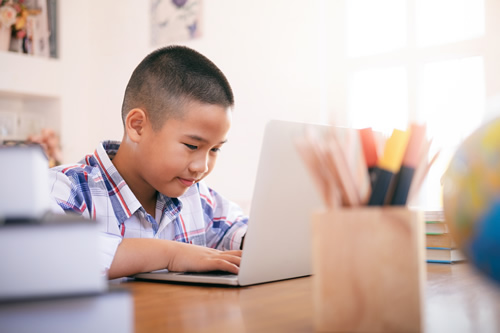I’ll never forget that feeling of heading into the complete unknown when New York Public Schools first closed due to the spread of a global pandemic. Overnight, our classrooms were empty. Technology became our lifeline to reach students and families. As a New York City public school founder and principal, I immediately began work to transition to virtual learning for 3- to 11-year-olds. But the most urgent question that flashed through my mind was: How are we going to make sure our children have the basics such as food?
At my elementary school in the Bronx, 86 percent of students qualify for free or reduced-priced school lunch. The pandemic has disrupted more than just learning for our scholars (that’s what I like to call our students). It has disrupted our ability to provide for their health and wellbeing.
Nearly a year into a global pandemic, we have honed the following virtual learning strategies to address the most fundamental needs of our scholars and their families during a crisis.
1. Use surveys to check on basic needs like access to food.
In the first few months of the pandemic, my first priority was to establish a quick way to communicate with families and gain critical information about their home situations. Once a week, we used an app called Kinvolved to text families a survey checking in on access to food, technology, and wi-fi. This has become an important way to engage with families, and we continue the practice today.
When communicating with families, all effort must be made to make those communications accessible. That means using not just email but also text for families without wi-fi-enabled phones. Simplicity is key. Don’t include more than five questions in a given survey. Create a regular cadence of outreach to set a standard so that families come to expect it and engage more consistently.
2. Use mindfulness strategies to help students manage stress and anxiety.
Home learning environments are often full of distractions that are out of a child’s control. Anxiety levels among adults are on the rise. With everyone stuck at home together for months on end, the transfer of that stress to children is inevitable. One of the most important skills we can teach our scholars is how to engage in the present moment.
Every time we make a transition between classes in a virtual setting at my school, we follow BIG: breathe in deeply three times, set an intention for the day, and get ready for a great day. This way, we hope to help students build the habit of mindfulness.
3. Establish habits that prioritize physical health.
Disruption to normal life and prolonged stress on families is taking its toll on both the mental and physical health of students. This is especially true for schools in areas with heightened health risks. In the South Bronx where my school is located, asthma rates are three times higher than the rest of New York City.
When students started coming back into school for hybrid learning in the fall, many were noticeably heavier. Our PE teacher recently taught a virtual cooking class to learn how to make a healthy dessert. From the physical to the mental, we are getting creative with virtual learning to help our scholars establish new, healthy habits.
4. Gamify virtual student engagement.
We can’t help students manage stress and build healthy habits if they aren’t engaging in virtual learning. The teachers at my school have gotten very creative keeping their scholars motivated and excited to learn. One of the best strategies for us has been rewarding kids who have perfect attendance with playing Among Us, a phone game that’s all the rage with kids right now.
We’ve also found success with activities that tap into the competitive spirit of our students and teachers. In the fall, we participated in a fitness and coding challenge with schools across the country using a STEM learning tool called Unruly Splats. Student participation rose across remote and hybrid learning, and our school won the competition. We love challenges like this that create a sense of community and shared accomplishment without having to be together in person.
5. Provide students with choices for how and when they engage in class.
A big focus this year has been on teaching our scholars time management that considers their home situation. For some kids who live in small apartments with multiple adults and siblings, concentrating during the day is impossible. For them, it may be better to do their schoolwork late at night when it’s quieter.
In addition to providing choices for when students complete work, we have expanded the ways in which students can showcase their learning. The children who were labeled shy in a traditional classroom setting are coming to life by making their own videos. A child who may have struggled to submit written work is verbose and animated when submitting an audio recording. By expanding the digital mediums scholars can choose to use, they are sharing their knowledge with us in new and exciting ways.
As a school leader, I often start to worry and plan for how we’ll eventually make up for possible learning losses our scholars have endured during this pandemic. When I find myself in that state of mind, I remind myself to focus on the present moment. The most important thing we can do for our scholars in this challenging year is support their health and wellbeing.
- High school students say AI will change the workforce - April 18, 2024
- Motivating students using the Self-Determination Theory - April 17, 2024
- Michigan Virtual’s statewide workgroup releasing AI guidance for K-12 educators - April 17, 2024

